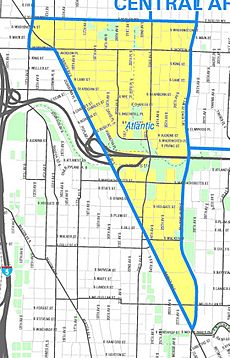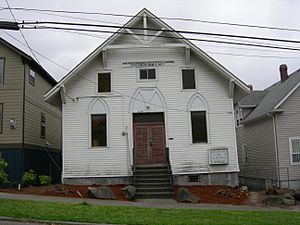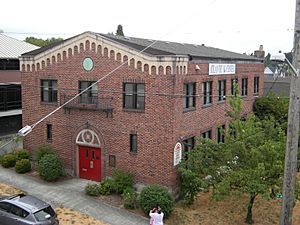Atlantic, Seattle facts for kids
Atlantic is a neighborhood in Seattle, Washington, located in the northern part of the Rainier Valley. It sits between two hills, Mount Baker Ridge and Beacon Hill. Atlantic is often considered part of the Central District in east-central Seattle, but it can also be seen as part of South Seattle. The smaller Judkins Park neighborhood is also found within Atlantic.
Contents
Exploring the Atlantic Neighborhood
The Atlantic neighborhood has a unique triangular shape. To the north, it's bordered by E Yesler Way, with the Mann and Minor neighborhoods beyond. On the east, Martin Luther King, Jr. Way S separates it from Leschi on the Mount Baker Ridge. To the west, Rainier Avenue S is the boundary, leading to Yesler Terrace and the International District of Downtown Seattle, as well as North Beacon Hill.
Judkins Park: A Green Space
Judkins Park is a rectangular area located inside the Atlantic neighborhood. Its southern edge is marked by Interstate 90, a major highway, and its western side by 20th Avenue S. Like Atlantic, Judkins Park is bordered by E Yesler Way to the north and Martin Luther King, Jr. Way S to the east.
Judkins Park is a great place for outdoor activities. It features two baseball fields, a soccer field, a playground for kids, and even a small water park, perfect for cooling off on a warm day.
A Look at Atlantic's History
Atlantic is one of Seattle's oldest residential neighborhoods, meaning people have lived here for a long time. It's part of what was once known as the Central Area, now called the Central District.
During the 1960s and early 1990s, the neighborhood faced some big changes. A large highway project, the widening of Interstate 90, caused many homes to be removed and divided the western part of the neighborhood. This was a challenging time for the community. However, by the 1990s, new construction and development began again, helping the area to grow and rebuild.
Diversity in the Neighborhood
The Judkins Park area within Atlantic is known for its diverse population. In the 1990s, studies showed that many different groups of people lived there. About 55% of the residents were African American, 22% were Asian American and Pacific Islander American, and 18% were White American. This mix of cultures makes the neighborhood a vibrant place to live.
External Links
- Keyword searches at HistoryLink.org.
- Keyword searches at The Seattle Times (you might need to register to read older stories).




